Ed Baquero relishes the nuances of floor plans. To him, they are beyond a puzzle to solve, they are an art form. Baquero, the developer of the Robert A.M. Stern-designed luxurious 20 East End Avenue, deep dives into everything he does. When designing 20 East End’s floor plans, he and his RAMSA team went through no less than 50 iterations to get their floor plans perfect. “If I showed you the war room pictures with the team around the clock, working until 3 or 4 am, with tissue layover over tissue layover on 27 different layouts, you would go crazy. Creating a floor plan is like a rubix cube. There are infinite combinations. When it clicks, you got it right. But there is so much to consider. If you move one part of a floor plan, you can disturb an entirely different apartment with a single move.”
There are two broad types of floor plans – open and traditional/discreet. Baquero has designed both but, if pushed, leans toward traditional. “Traditional floor plans unveil things in a specific way. They create a procession through the apartment. You turn the corner and ‘wow!’ You turn another corner, ‘wow!’” In the open, loft style, “there is one big, open room where you enter the front door and see the whole apartment.”
In this article:
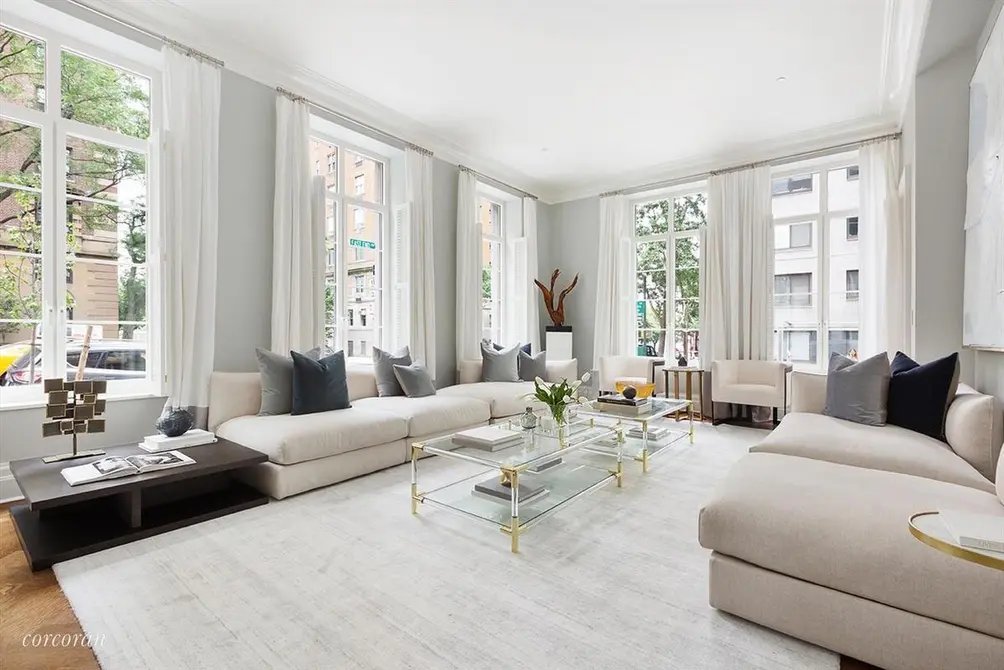 20 East End has just three residences available, including this maisonette residence, asking $10.895M
20 East End has just three residences available, including this maisonette residence, asking $10.895M
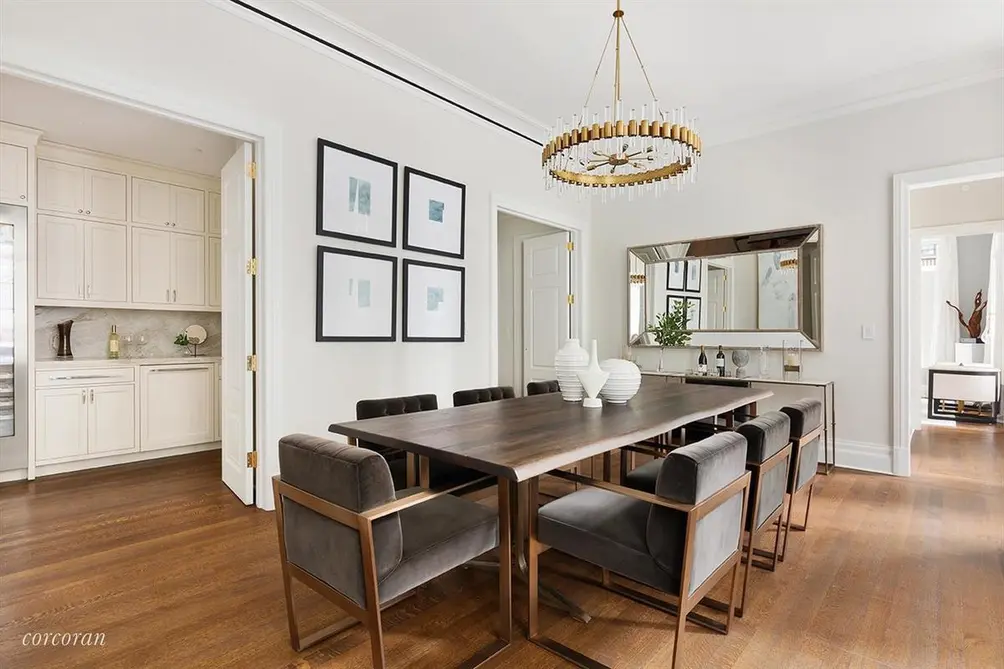 20 East End Avenue features a traditional floor plan, which Baquero prefers.
20 East End Avenue features a traditional floor plan, which Baquero prefers.
In Baquero’s floor plans of 20 East End, he said, “The separate rooms of a traditional floor plan need to flow and speak to each other regardless of separation of space. They must speak to one another in relation to function and location – a swinging door from the kitchen to the dining room flows from the living room to the library and so on.”
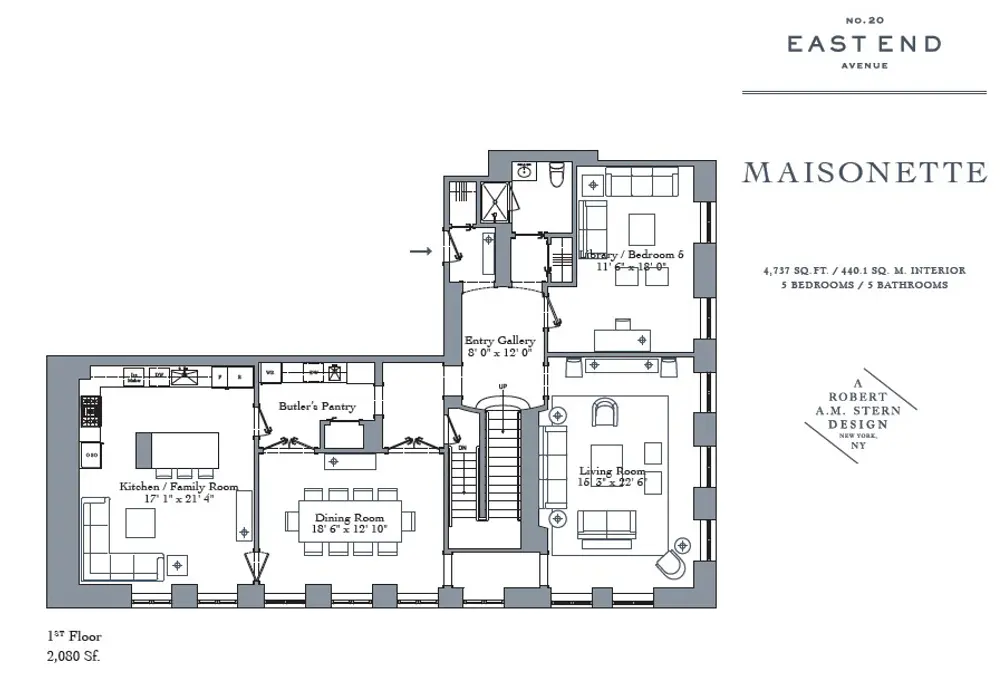 Maisonette floor plan
Maisonette floor plan
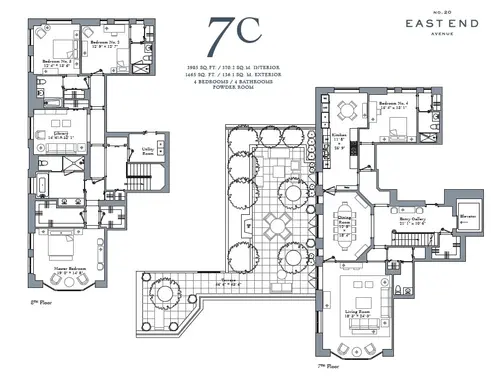 Unit 7C, asking $11.995M
Unit 7C, asking $11.995M
In 1910, the first super-luxury apartment house was erected at 998 Fifth Avenue. An ornate, Italian Renaissance Palazzo-style building, designed by McKim, Mead & White, started the movement to convince the current Upper East Side mansion-dwelling elite to move into grand apartment buildings. Previously, only the nouveau riche lived in apartment buildings but in the early 1900s, architects began designing 5-10,000 square feet simplexes and duplexes that would rival any Park or Fifth Avenue townhome.
Although Rosario Candela is most well known for his spreading this phenomenon throughout New York City with sumptuous palaces in the sky, it was James E.R. Carpenter who really made the first impact. Carpenter understood that in order to convince the upper crust of New York society to leave grounded mansions and move on up, they needed homes as or more grand than what they already had. He was an architect and also a real estate developer so he didn't just design for the elite, Carpenter was the elite. “Carpenter understood the reality that, if this promise was to be fulfilled, the planning of new apartments had to be so skillful that the compromise of the ‘multiple dwelling’ status would be obscured.”
Although Rosario Candela is most well known for his spreading this phenomenon throughout New York City with sumptuous palaces in the sky, it was James E.R. Carpenter who really made the first impact. Carpenter understood that in order to convince the upper crust of New York society to leave grounded mansions and move on up, they needed homes as or more grand than what they already had. He was an architect and also a real estate developer so he didn't just design for the elite, Carpenter was the elite. “Carpenter understood the reality that, if this promise was to be fulfilled, the planning of new apartments had to be so skillful that the compromise of the ‘multiple dwelling’ status would be obscured.”
 Rosario Candela
Rosario Candela
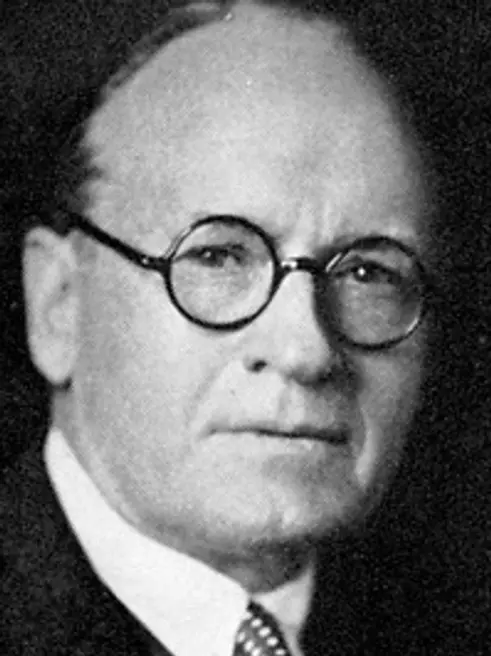 J. E. R. Carpenter
J. E. R. Carpenter
According to the foreword by David Netto, in Andrew Alpern’s “The New York Apartment Houses of Rosario Candela and James Carpenter,” Candela and Carpenter’s buildings, “possess a consistent quality that has never been surpassed...Although they possess beautiful facades in a variety of historical styles and are much-appreciated embellishments to the streetscape, their real accomplishment and contribution to architectural history lies in the ingenuity of their floor plans.” Candela built on Carpenter’s layout concepts and added even more luxury.
Carpenter is most well known for developing the foyers as the entrance hall of the gallery and the central point of the apartment. Along with the living room, dining room, and library, the foyer was considered the fourth room for receiving and seeing off guests. It was viewed as a circulation hub.
Carpenter was instrumental in creating strict separations of space with functional areas specifically designed for public and private life and for servants and creating. The antithesis of the open floor plan, Carpenter’s layouts designated each room with a specific function – there was no confusing where to eat, entertain, cook, relax, and sleep.
Carpenter is most well known for developing the foyers as the entrance hall of the gallery and the central point of the apartment. Along with the living room, dining room, and library, the foyer was considered the fourth room for receiving and seeing off guests. It was viewed as a circulation hub.
Carpenter was instrumental in creating strict separations of space with functional areas specifically designed for public and private life and for servants and creating. The antithesis of the open floor plan, Carpenter’s layouts designated each room with a specific function – there was no confusing where to eat, entertain, cook, relax, and sleep.
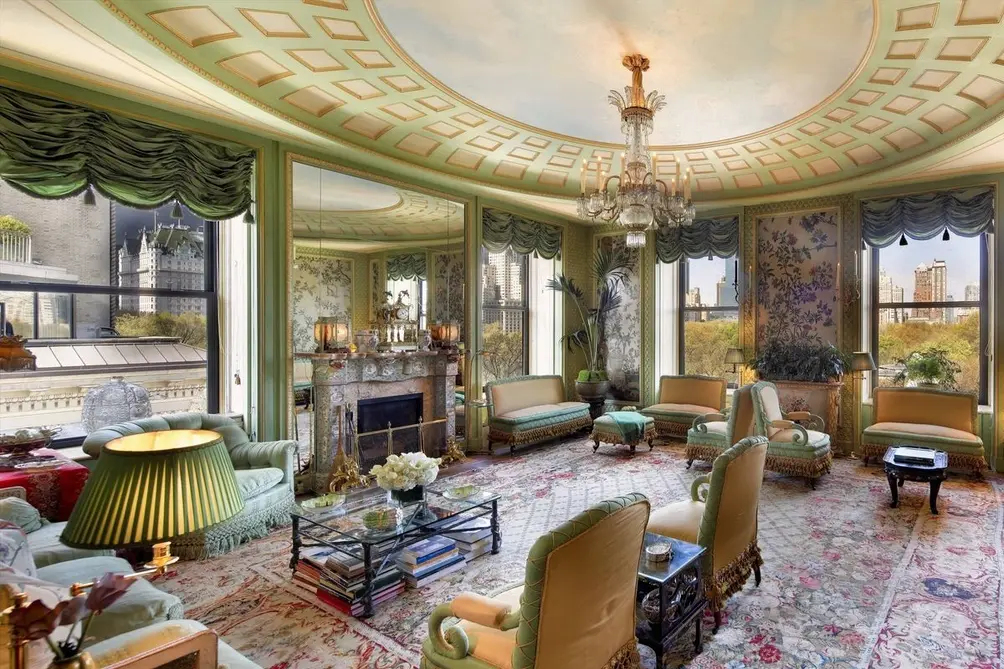 Unit 7/8A, a 20-room co-op at Candela's 834 Fifth Avenue is currently asking $76 million (Brown Harris Stevens)
Unit 7/8A, a 20-room co-op at Candela's 834 Fifth Avenue is currently asking $76 million (Brown Harris Stevens)
Not to diminish Candela’s role in the development of these grand apartments, Candela’s cryptography experience deciphering German code during the war made him a master at floor plans. He could figure out configurations, never two the same, in record time (often in one sitting) and with perfect precision.
Amazingly, "Candela's six grandest apartment houses were designed and their plans filed with the city in one continuous stretch of creativity between March and October of 1929. 740, 770, 778, and 1220 Park Avenue and 834, and 1040 Fifth Avenue contain among them the most magnificent assemblage of extraordinary apartments ever produced by any architect.”
Amazingly, "Candela's six grandest apartment houses were designed and their plans filed with the city in one continuous stretch of creativity between March and October of 1929. 740, 770, 778, and 1220 Park Avenue and 834, and 1040 Fifth Avenue contain among them the most magnificent assemblage of extraordinary apartments ever produced by any architect.”
“Today, more than ever, floor plans are important. They are, arguably, one of the top three things in choosing a place to live: location, floor plans, and detailing. It’s a big deal. Brokers are adept and comment on them. Imperfections can break a deal.”
What Carpenter and Candela created in the 1920s, resonates and endures today as their buildings still hold great social cache and fetch top dollars. The only major differences between the original layout and what we see today are transforming kitchens into a family gathering place, versus a backroom for staff to prepare meals and the elimination of multiple staff bedrooms (some of the old grand apartments had six-plus bedrooms for their staff in the back of the apartments, most of which were only about 6’ x 10’ big).
According to Baquero, “Today, more than ever, floor plans are important. They are, arguably, one of the top three things in choosing a place to live: location, floor plans, and detailing. It’s a big deal. Brokers are adept and comment on them. Imperfections can break a deal.”
According to Baquero, “Today, more than ever, floor plans are important. They are, arguably, one of the top three things in choosing a place to live: location, floor plans, and detailing. It’s a big deal. Brokers are adept and comment on them. Imperfections can break a deal.”
Baquero has worked with Steven Rockmore, a floor plan specialist at Residential Realty Advisors, on a number of projects. Rockmore commented, “The desire for open plans continues, a lot of people don’t want them, a lot of people do. But I would never have an open plan for myself. I don’t want to worry about how the kitchen looks when it’s in the middle of the main room, who wants that?”
RAMSA, whose portfolio includes 220 Central Park South, 70 Vestry, and 15 Central Park West, was the clear choice for Baquero’s 20 East End architect. Robert A.M. Stern has immense respect for history paired with his ability to adapt it to modern life, as well as being a floor plan master.
RAMSA, whose portfolio includes 220 Central Park South, 70 Vestry, and 15 Central Park West, was the clear choice for Baquero’s 20 East End architect. Robert A.M. Stern has immense respect for history paired with his ability to adapt it to modern life, as well as being a floor plan master.
Rockmore says, “Very few people do floor plans well but Stern is very, very good at floor plans. Despite being the leaders in the traditional floor plans in New York, Rockmore says “RAMSA’s layouts differ from building to building because every building is so different. But, of course, certain factors stay the same, like the large formal areas like the dining room and the living room in one corner of the apartment and the library in the other, the entrance gallery with guest closets, great kitchens, pantries and all of those things.”
Baquero concludes by saying traditional plans are “a more civilized approach without giving up anything. These rooms are designed for what they’re designed for. There is a procession that flows and adjacencies in the right place. You have order.”
Baquero concludes by saying traditional plans are “a more civilized approach without giving up anything. These rooms are designed for what they’re designed for. There is a procession that flows and adjacencies in the right place. You have order.”
Would you like to tour any of these properties?

Contributing Writer
Michelle Sinclair Colman
Michelle writes children's books and also writes articles about architecture, design and real estate. Those two passions came together in Michelle's first children's book, "Urban Babies Wear Black." Michelle has a Master's degree in Sociology from the University of Minnesota and a Master's degree in the Cities Program from the London School of Economics.


 6sqft delivers the latest on real estate, architecture, and design, straight from New York City.
6sqft delivers the latest on real estate, architecture, and design, straight from New York City.
